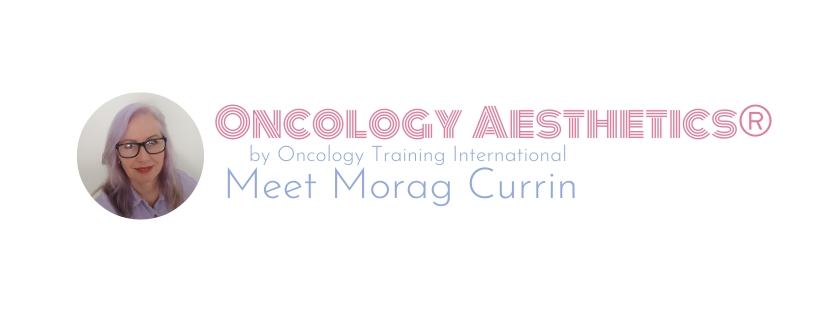Understanding Radiation Dermatitis For Estheticians
by Morag Currin
Understanding Radiation Dermatitis
Can Sustainable Skin Care Products Be Recommended to Clients Undergoing Radiation Therapy?
A pretty high percentage (90%) of people undergoing radiation as part of their treatment for cancer, will experience radiation dermatitis (RD) and is confined to areas of skin that have been radiated, and the skin changes are sharply demarcated.
Radiation of the skin leads to a complex pattern of direct tissue injury involving damage to cells of the epidermis and endothelial cells within the walls of blood vessels, and inflammatory cell recruitment.
Radiation dermatitis generally manifests within a few days to weeks after the start of radiation Tx. Its onset varies depending on the radiation dose intensity and the normal tissue sensitivity of individuals. It is confined to areas of skin that have been irradiated, and the skin changes are sharply demarcated.

Radiation dermatitis can be classified as acute or chronic.
Acute radiation dermatitis occurs within 90 days of exposure to radiation. The patient may have skin changes ranging from faint erythema (reddening) and desquamation (peeling skin) to skin necrosis (death of skin cells) and ulceration, depending on the severity of the reaction.
The National Cancer Institute (USA) has developed 4 criteria for the classification of acute radiation dermatitis:
o Grade 1 – Faint erythema or desquamation.
o Grade 2 – Moderate to brisk erythema or patchy, moist desquamation confined to skin folds and creases. Moderate swelling.
o Grade 3 – Confluent, moist desquamation greater than 1.5 cm diameter, which is not confined to the skin folds. Pitting oedema (severe swelling).
o Grade 4 – Skin necrosis or ulceration of full-thickness dermis (middle layer of skin).
As this skin condition moves from Grade 1 up to Grade 4, it obviously presents with deterioration of the skin and people are always seeking a topical product to provide relief. Grade 2-4 requires healthcare professional intervention.
- Chronic radiations may start appearing 15 days to 10 years or more after the radiation Tx. It is an extension of the acute process and involves further inflammatory changes in the skin.
Chronic radiation-induced changes in the skin are characterised by:
o The disappearance of pores/follicles
o An increase in collagen and damage to elastic fibres in the dermis
o A fragile epidermis
o Telangiectasia
Esthetician Recommendations: it is imperative we seek out any changes to the skin in clients with a history of radiation as secondary skin cancers (most commonly basal cell carcinoma) may also result from repeated exposure to radiation Tx.
Historically, and still today, many people undergoing radiation therapy are advised by their healthcare team to AVOID using topical products prior to, and post radiation to avoid increasing the amount of radiation absorbed by the skin. While this may have been the situation with older types of radiation equipment, the new equipment/treatments produce very targeted doses of radiation to skin cells, therefore limiting the amount of destruction to skin cells and other tissue in the path of radiation.
In 2018, a study established the following:
- It is still very common for oncology healthcare professionals to recommend that their patient AVOID applying skin care products prior to their radiation Tx.
- It debunked the myth that applying topical skin care would increase the amount of radiation received, therefore causing more harm…..so, not true.
Esthetician Recommendations: When skin care product is applied to the skin pre Tx, and left on during Tx or applied post radiation Tx, it needs to be applied thinly without applying any aggressive pressure to the area.
2 Products for Use On The Skin During Radiation
1. The Hale & Hush Hush Hydrate Mask, followed by the Broad Spectrum SPF 30 post treatment.
2. The Repêchage HydraDew® Elixir Balm applied thinly to the skin. (Launching August 2020)
Watch Webisode of L+A Now with Morag, “Preview Of Full Day Workshop” on Oncology Aesthetics®

Watch The Episode On The L+A App!
Download on the App Store or Google Play

About Morag
As a leader in our industry, Morag has spent over 27 years in the aesthetic/skin care industry, researching and constantly updating her knowledge on cancer and other diseases and how treatment affects the services we offer; plus she still offers services such as reflexology, aromatherapy and electrodessication. Morag pioneered Oncology Esthetics® training back in 2007. It was her concept that has driven change to our industry that others have followed. She consults globally with industry leaders by educating them how to include the cancer community. Besides making time for written articles and webinars she offers equine facilitated learning and activity sessions for the cancer community and veterans since there is a prevalence of significant psychological distress within these communities.
